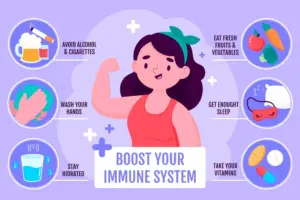Understanding Trichotillomania TTM Disease Hair-Pulling Disorder
Trichotillomania (TTM) or trich picking disorder, also known as hair picking disorder or hair pulling diseases, is a complex mental health condition characterised by the compulsive urge to one’s pulling on hair. This often leads to noticeable hair loss, distress, and difficulties in daily life. The condition is classified as an obsessive compulsive disorder trichotillomania and related disorder (OCRD) and can affect individuals of all ages.
Many people with hair pulling disorder feel a sense of relief or satisfaction after pulling hair, but this is often followed by feelings of shame, guilt, or frustration. As a result, some individuals attempt to hide their hair loss or avoid social situations, which can significantly impact their self-esteem and overall mental well-being.
At Chase Lodge Hospital, we recognise the challenges faced by individuals with trichotillomania hair-pulling disorder condition and offer comprehensive assessment, diagnosis, and tailored treatment plans to support long-term recovery.
What are the causes for Trichotillomania Hair-Pulling Disorder?
The exact cause of Trichotillomania TTM disease is not fully understood, but research suggests that it develops due to a combination of genetic, neurological, psychological, and environmental factors. Some of the key contributors include:
1. Neurological Factors
- Trichotillomania hair picking disorder or ripping hair out disorder has been linked to irregularities in brain function, particularly in areas responsible for impulse control and emotional regulation.
- Abnormalities in neurotransmitters, such as dopamine and serotonin, may contribute to compulsive hair pulling trichotillomania behaviours.
2. Genetic Influences
- Research indicates that causes for trichotillomania may run in families, suggesting a genetic predisposition.
- Studies have found that individuals with close relatives who have obsessive-compulsive disorder (OCD), anxiety disorders, or TTM may be at higher risk.
3. Psychological and Emotional Triggers
- Many people with TTM disease report trich hair pulling condition as a coping mechanism to deal with stress, anxiety, or boredom.
- Trauma, emotional distress, or unresolved psychological issues may increase the likelihood of developing TTM.
4. Habitual and Sensory Aspects
- Some individuals engage in trichotillomania hair-pulling disorder
due to sensory gratification, finding the sensation of pulling or playing with the hair soothing. - Over time, trich hair pulling can become a deeply ingrained habit, making it difficult to stop without professional intervention.
Recognising the Pulling hair Out Syndrome
Common Hair Pulling Disorder Symptoms and Signs :
- Recurrent urges to pulling on hair, leading to noticeable hair loss.
- Hair picking disorder condition from various areas, including the scalp, eyebrows, eyelashes, beard, or pubic region.
- Feeling a growing tension or anxiety before hair pulling trichotillomania, followed by a sense of relief or pleasure after doing so.
- Repeated unsuccessful attempts to stop trichotillomania hair-pulling disorder, despite knowing the negative consequences.
- Hiding hair loss or bald patches by wearing hats, scarves, or using makeup.
- Feelings of shame, guilt, or embarrassment, leading to avoidance of social situations.
Some individuals may not even be fully aware of their hair-pulling diseases behaviour, especially if it occurs during moments of deep thought, boredom, or stress.
How Trichotillomania Hair Pulling Disorder Diagnosed?
At Chase Lodge Hospital, hair pulling disease diagnosis is carried out by expert mental health professionals, including psychiatrists, psychologists, and therapists, who specialise in obsessive compulsive disorder trichotillomania. The diagnostic process typically includes:
- A detailed clinical interview to understand the nature and impact of the symptoms.
- A review of medical and psychological history to rule out other causes of hair loss (e.g., alopecia areata, skin conditions, or medication side effects).
- Psychological assessments to evaluate any co-existing conditions, such as anxiety, depression, or OCD.
Since pulling hair out syndrome can significantly impact an individual’s quality of life, an early and accurate trichotillomania hair pulling disease diagnosis is crucial to ensure the most effective treatment.
Hair Pulling Trichotillomania Treatment Options at Chase Lodge Hospital
At Chase Lodge Hospital, we provide a holistic, evidence-based approach to treating Trichotillomania hair pulling disorder, with treatment plans tailored to each individual’s specific needs.
1. Cognitive-Behavioural Therapy (CBT)
CBT is widely regarded as the gold standard treatment for hair pulling trichotillomania. It helps individuals:
- Identify and understand triggers that lead to hair-pulling.
- Develop alternative coping mechanisms to manage urges.
- Challenge negative thought patterns associated with hair-pulling.
2. Habit Reversal Therapy (HRT)
HRT is a specialised type of CBT designed specifically for compulsive behaviours like hair pulling condition. It involves:
- Recognising hair pulling disorder symptoms and signs before an urge to pull occurs.
- Replacing hair-pulling with a competing response (e.g., squeezing a stress ball or using fidget toys).
- Building awareness and control over the behaviour.
3. Medication (When Necessary)
In some cases, medication may be recommended, particularly if obsessive compulsive disorder trichotillomania is accompanied by severe anxiety or depression. Possible options include:
✔ Selective serotonin reuptake inhibitors (SSRIs) – commonly used to treat anxiety and OCD-related symptoms.✔ N-acetylcysteine (NAC) – a supplement that has shown promise in reducing compulsive behaviours in some individuals.
4. Mindfulness and Stress Management
Techniques such as mindfulness meditation, relaxation exercises, and breathing techniques can be beneficial in reducing stress and increasing awareness of hair pulling trichotillomania behaviours.
5. Support Groups and Therapy
- Peer support groups can help individuals connect with others experiencing similar challenges.
- Family therapy can be beneficial for younger individuals with TTM diseases, ensuring parents and loved ones provide the right support.
Why Choose Chase Lodge Hospital for Trichotillomania Hair Pulling Disorder?
At Chase Lodge Hospital, we understand that Trichotillomania TTM disease is more than just a habit—it is a serious and distressing condition that requires expert care. Our approach focuses on:
✔ Comprehensive, evidence-based treatment tailored to each patient’s unique needs.
✔ A multidisciplinary team of specialists, including psychiatrists, psychologists, and therapists with expertise in OCD and compulsive behaviours.
✔ Personalised care in a supportive, confidential, and non-judgemental environment.
We are committed to helping individuals regain control over their lives and improve their mental well-being.
Book an Appointment at Chase Lodge Hospital
If you or a loved one is struggling with Trichotillomania hair-pulling disorder, seeking professional help is the first step towards recovery.
📞 To book an appointment with our mental health specialists at Chase Lodge Hospital, contact us today.
For further Info, visit the NHS website:
https://www.nhs.uk/mental-health/conditions/trichotillomania/



